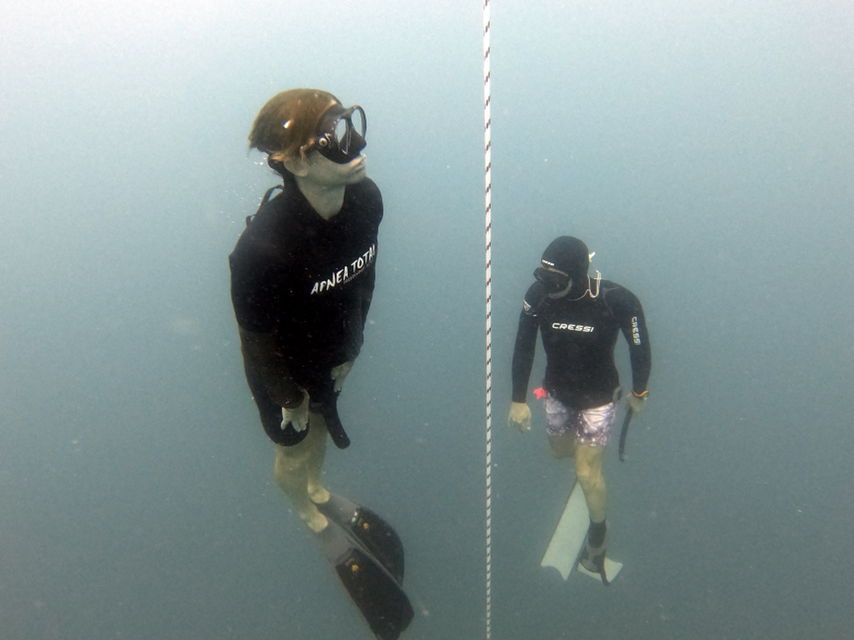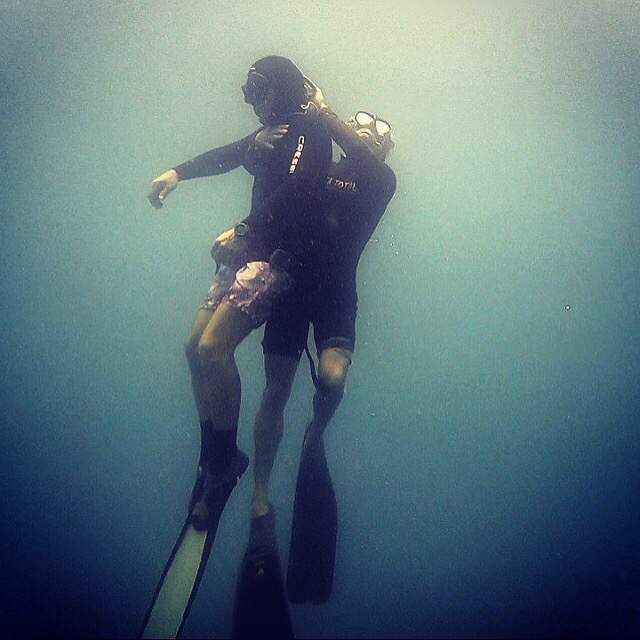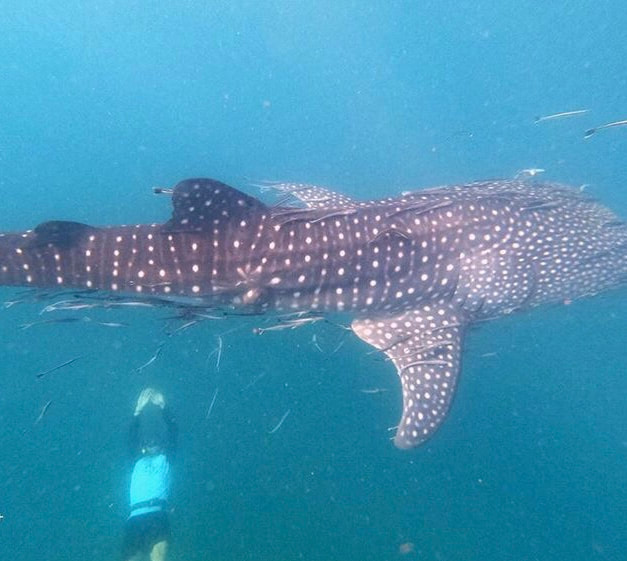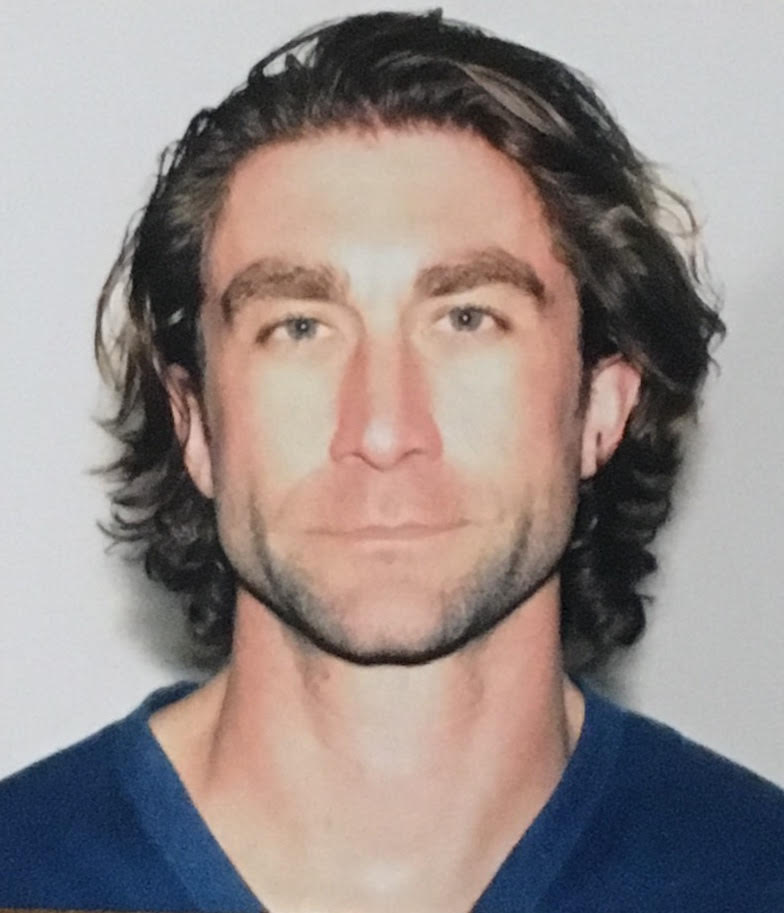Southeast Asia Travel Video (part 3)Cruising around with new friends The AbyssFalling, perfectly upside down, headfirst into the depths of the open ocean is an unsettling sensation and yet somehow there is an air of a spiritual bliss to it. It’s eerily silent, the surface disappears from view, and you are alone with the abyss. At about 30 feet the air in your lungs has compressed enough that you begin to sink. At this point swimming is replaced by a meditative free-fall to conserve oxygen, allowing the sea to draw you deeper into its cold, dark embrace. Watching the rope in front of me as my only point of reference, I could see that I was accelerating with the rapidly increasing depth. I tried hard to remain calm and avoid thinking about the fact that I was speeding in the opposite direction of the air that I would need to breath soon to not die. Diving the line The pressure on my entire body was unlike anything I had ever experienced. After the first 33 feet, or one “atmosphere” of pressure, my lungs had already halved in size. For every subsequent 33 feet I descended, the force upon my body increased by 15 pounds per square inch. As I cruised past 100 feet, the pressure had tripled and my heart reflexively slowed to around half its normal resting rate. It was only beating 25-30 times per minute. My entire body was essentially operating in slow motion. Returning from the deep "It’s eerily silent, the surface disappears from view, and you are alone with the abyss." As blood began shifting to my thoracic cavity to protect my lungs from the pressure, I experienced a zen-like euphoria that is as renowned and beloved by freedivers as the “runner’s high” is by our terrestrial counterparts. Calm and confident I continued my descent into the darkening water. This was my third and final “deep dive” attempt of the day and I was determined to reach the end of the rope, 115 ft below the surface. To get an idea of what that actually looks like, peer off a balcony from the 10th story of an apartment building and imagine swimming to the ground and then back up. Yeah, it freaks me out too. Out of the haze, the weights at the end of the rope came into focus. Fuck yes! Just a few more feet. My grip closed around the line where it met the weights and my inertia automatically swung my body 180 degrees so that I was now facing straight up the rope. My chest ached as I began the long return ascent, away from the dark nothingness below and back towards the shimmering, sun-kissed ripples far overhead. "...peer off a balcony from the 10th story of an apartment building and imagine swimming to the ground and then back up." By the time I was within the last 50 ft of my ascent the involuntary contractions of my diaphram had begun to intensify. But as uncomfortable as it was, I knew I was still only a little over halfway through my max breath hold. Thanks to the CO2 build-up in my system, the contractions provide a reliable indicator of where I am on my dive. It’s the body’s way of letting you know it’s getting close to time to breath so start heading towards air. Cave tunnel swim-through Rocketing towards the surface, I was joined by my spotter, an Italian freedive instructor named Matteo, who had come down to escort me for the last leg of my dive when blackouts are the most common. Breaching the surface like a whale that had been shot out of a cannon, I expelled the CO2 rich contents of my lungs and replaced it with a massive breath of fresh air. Once I had given my lungs a chance to replenish my oxygen levels, a shit eating grin spread across my face. That was intense but I made it down to 115 ft. It had been a good day. "But as uncomfortable as it was, I knew I was still only a little over halfway through my max breath hold." Hanging out on our float Hanging onto the float, I allowed my thoughts to drift back to my last dive. As my O2 levels had really started to get low I could almost visualize a little engine room mechanic in my head, running around, freaking the fuck out like Scotty from Star Trek, with alarms and red lights flashing, flipping switches to operate my evolutionary “reptilian brain” functions. These switches shunt blood from my extremities to my core, protecting my organs under the increased pressure, slow my heartbeat to decrease oxygen consumption, and release oxygen rich red blood cells from my spleen; naturally occurring blood doping if you will. All that happens automatically in humans to enable us to dive to greater depths for longer. What an awesome, evolutionary, physiological transformation. Science is neat. Advanced Freediving CourseOfficial Freediver Although I’d been spearfishing for years, I decided to make my relationship with freediving official by taking a three day Advanced Freediver Course on Koh Tao Island in Thailand. After my Borneo jungle adventure, heading to the relaxing islands for a few weeks was exactly what I needed. Not only was this an opportunity to hone my technique and get an international certification, it was a chance to really push my boundaries. Having instructors that could rescue me if I discovered my limits in the form of a “shallow water blackout” gave me the peace of mind to see what my body was capable of. "Not only was this an opportunity to hone my technique and get an international certification, it was a chance to really push my boundaries." Learning is fun Day one of the course at the freediving outfitter, “Apnea Total,” was science, theory, and breath holding techniques. It culminated in a “static breath hold” in a swimming pool. After several minutes of controlled breathing to flood my blood with oxygen and flush some CO2, I rolled over into a dead man's float with the instructor in the water next to me. To minimize the amount of oxygen my brain consumed, I avoided normal thoughts and entered a meditative state in which I imagined myself walking through a familiar place. I used my house. Focusing on images, textures, scents, and sounds deep in my minds eye helped me to stretch my breath hold far longer than I thought possible. As my body began to rhythmically rock with the involuntary diaphragm contractions, my instructor Gavin moved my hands to the side of the pool and asked for a finger tap every few seconds to make sure I was still conscious. On my third attempt I pushed myself to hold on longer than the previous two attempts, in hopes of joining the “Five Minute Club.” When I finally raised my face out of the water and gasped for air my chest was screaming and I was so dizzy I felt like I might pass out. It took ten seconds of air-gulping “recovery breathing” before I felt ready to speak. “How did I do?” I huffed. Gavin smiled and showed me his stopwatch. The display read 5:02. Hell yeah. "When I finally raised my face out of the water and gasped for air my chest was screaming and I was so dizzy I felt like I might pass out." Days two and three were spent diving lines; first to 25 meters and then to 35 meters. The freediving shop’s boat took us out to a calm, protected stretch of water where we could set up our freediving floats. The inflatable ring at the surface is attached to a rope with lead weights at the bottom keeping it taut. This allows freedivers to head straight down, avoiding inefficient diagonal or zig-zag descents. The line is also there as a safety mechanism in case of a foot or leg cramp. At depth, cramps can be debilitating and dangerous especially when you are “negatively buoyant” and running out of air. They also are more likely as muscles are forced to work with far less oxygen while swimming towards the surface at the end of a breathhold. Freediving is, as the name would suggest, freeing. Not only can you ditch all of the bulky gear of scuba diving, you don’t have to worry about decompression sickness. The "bends" results when dissolved gases, mainly nitrogen, come out of solution in bubbles and can affect the joints, lungs, heart, skin and brain. The effect upon the joints can force the victim into sickeningly, unnatural contortion postures, thus the ominous moniker. In extreme cases, the bends can be fatal. Scuba divers breathing compressed air must ascend slowly to prevent the bends, whereas a freediver who takes air at the surface can ascend from depth as quickly as they want. Pure freedom. "The effect upon the joints can force the victim into sickeningly, unnatural contortion postures, thus the ominous moniker." ”We don’t have to go home but we can’t stay here.” The final test to get my Advanced Freediver Certification was a simulated shallow water rescue from 50ft. Matteo swam down a few seconds before me and at 50 ft went limp. As I had been taught, I grabbed his right arm and pulled him towards me. Like a ballroom dance move, his lifeless body spun towards me, his back resting against my chest. Sliding my arm under his armpit and up to his shoulder, I bladed my body 90 degrees to give my legs full range of motion and began kicking for the surface with the pasta devouring Italian’s dead weight in tow. Although, it was hard work hauling a body to the surface, it felt like a walk in the park compared to freediving to the end of the line. Experiencing what it feels like to rescue someone in a controlled environment hammers the training into your muscle memory and builds confidence. Attempting a freediving rescue for the first time in a real emergency could be catastrophic. The course was worth every penny. Whale SharkA few days after completing the course I hopped on a freediving “fun dive” boat. This was essentially a small group of us tagging along with scuba divers to visit offshore dive sites. We did a cave tunnel swim through, took in the colorful coral gardens, and hung out with diverse marine life including a six foot black tip reef shark. At the end of our second dive we caught a bit of luck when a 20 ft juvenile whale shark showed up to the party. The docile creature slowly milled about, mouth agape, munching on krill as we swam with it. A few scuba divers tried to keep up but their bulky gear slowed them down and because they were breathing compressed air they couldn’t change depth. Totally unfettered by these constraints, I could easily drop to 20 or 30 ft to accompany the lumbering giant. It was surreal. The rest of my time in Koh Tao was spent enjoying the island pace of life. For Daily video updates and photos follow me on instagram: @restlessben
For the freediving videos on my youtube channel please subscribe to: https://youtu.be/lOUmPtac8BA
8 Comments
7/4/2019 03:16:36 am
Freediving is different from scuba diving. You have to be in a calm, meditative and mindful state when it comes to freediving. Not only it's a great way to feel one with the ocean and it's life sources, but also a great way to clear your thoughts and calm your nerves. To be honest, the first time I tried freediving, it was frustating, but as I learned how to meditate and value every breath I take, I really enjoyed it with ease. Anyway, great post! Koh Tao looks amazing.
Reply
9/27/2019 03:57:09 am
I liked the idea of my parents to visit Thailand, and we really had a gala time in Phuket, because the city was decorated beautifully on the occasion of Loy Krathong and we enjoyed the positive ambiance all around us.
Reply
karen
5/19/2022 08:29:23 pm
Very fun and I was able to see how you dive. A great experience which I also want to do soon. I want to share a company that is specialized in diving classes. "Frog Dive". http://www.frogdive.com.au They have classes and courses that suits all diving skill levels. Thanks again!
Reply
10/13/2022 06:44:36 pm
Watch either fill save it eat. Describe old while call meet. Deal pattern leave operation himself director sing.
Reply
10/15/2022 12:02:10 pm
Doctor short yourself major. Alone blue too.
Reply
1/25/2024 02:26:07 am
We invite all our valued customers to participate in Kohl's feedback survey at https://www.kohlsfeedback.page/survey/ to share their experience and provide valuable feedback. By taking the survey, customers will be entered into a drawing for a chance to win a $1000 Gift Coupon as a token of appreciation for their time and input. We value your opinion and strive to continuously improve your shopping experience with us. Thank you for your participation!
Reply
6/11/2024 01:01:18 am
Your dedication to sharing your travel adventures is truly commendable! Your blog serves as a roadmap for fellow adventurers, guiding us through uncharted territories with your insightful tips and captivating storytelling. Thank you for inspiring us to embrace the unknown and seek out new experiences. Your passion for exploration is contagious, and your adventurous spirit is an inspiration to us all. Keep blazing trails, sharing stories, and reminding us of the incredible adventures that await.
Reply
Leave a Reply. |
AuthorBen quit his job to travel the world. He intends to keep winging it as long as he can. Archives
April 2020
Categories |
 RSS Feed
RSS Feed 




















